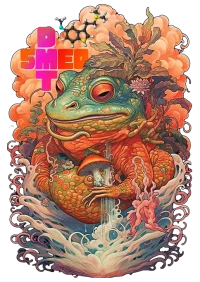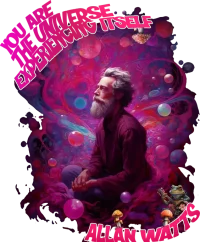
by Raul Lopez | Nov 16, 2024 | blog
If you’ve ever heard the term “suicide headaches,” it refers to the excruciating pain experienced during cluster headaches. These are some of the most intense headaches a person can endure, affecting a small part of the population but leaving a significant impact on the lives of those who suffer from them. While many treatments exist, including medication and oxygen therapy, they often don’t provide complete relief. Recently, psychedelics like psilocybin and LSD have emerged as potential breakthrough treatments, with some finding significant relief when all else fails.
In this article, we’ll explore why psychedelics might be a game-changer for cluster headache sufferers, how they work on the brain, and what research says about their effectiveness.
What Are Cluster Headaches?
Cluster headaches are rare but extremely painful headaches that occur in cyclical patterns or “clusters.” They differ from migraines, as their pain is typically shorter in duration but more intense, lasting between 15 minutes to 3 hours. Here’s what makes cluster headaches stand out:
- Severe Pain: The pain is concentrated around or behind one eye, often described as sharp, burning, or stabbing.
- Recurring Episodes: These headaches occur in cycles, with multiple attacks over weeks or months, followed by periods of remission.
- Additional Symptoms: They often come with red or watery eyes, a runny nose, drooping eyelids, and intense restlessness.
Treatment options for cluster headaches are limited, and many sufferers find that even prescribed treatments provide only partial relief. This is where psychedelics come into the picture.
How Psychedelics Could Help with Cluster Headaches
Psychedelics like psilocybin (the active component in magic mushrooms) and LSD have shown promise in alleviating cluster headaches. Here’s why they may be effective:
1. Impact on Serotonin Receptors
Psychedelics, including psilocybin and LSD, interact with serotonin receptors, particularly the 5-HT2A receptor. These receptors play a role in regulating mood, perception, and pain. Cluster headaches are believed to be linked to abnormal activity in the hypothalamus—a part of the brain that helps regulate pain. Psychedelics may help correct or stabilize this activity, reducing the likelihood and intensity of headache episodes.
2. Interrupting the Headache Cycle
One of the most fascinating effects of psychedelics on cluster headaches is their reported ability to interrupt the headache cycle. Many people have found that a single dose of psilocybin or LSD can halt a cluster cycle completely, providing weeks or months of relief. This is a significant breakthrough for those who experience chronic cycles of headaches throughout the year.
3. Long-Lasting Relief
Unlike standard treatments that often require daily medication or oxygen during each headache, psychedelics may offer long-lasting effects. Some users report significant relief from just one dose, with the benefits extending for months. This makes them a potential option for reducing the need for continuous or daily medications.
The Research Behind Psychedelics and Cluster Headaches
While studies are still in the early phases, research into psychedelics as a treatment for cluster headaches has provided promising results:
- Psilocybin and Cluster Headaches: A study published in Neurology showed that psilocybin could effectively reduce both the frequency and severity of cluster headache attacks. Participants reported fewer attacks after taking psilocybin, and some experienced remission from the headaches for weeks or months afterward.
- LSD for Preventing Headaches: Early studies suggest that LSD, when taken in low doses, may prevent cluster headaches. Like psilocybin, LSD works on serotonin receptors and may help regulate brain activity linked to pain. Preliminary findings suggest it could be used as a preventive measure.
- Clusterbusters Movement: An advocacy group known as Clusterbusters, composed of cluster headache sufferers, has been actively promoting the use of psychedelics for treatment. They have helped gather anecdotal evidence, pushing for more scientific research to explore the benefits of psilocybin and LSD for those with chronic headaches.
How Psychedelics Are Used for Cluster Headaches
The way psychedelics are used to treat cluster headaches can vary based on individual needs. In general, they are taken in low doses, either during active headache cycles or as a preventive measure.
1. Acute Use
For those experiencing an active headache cycle, a single dose of psilocybin or LSD may stop the headaches. This method is called acute use, and it’s designed to break the cycle so that the headaches stop recurring.
2. Preventive Use
Some sufferers choose to take psychedelics preventively, before their cluster cycles begin, particularly if their headaches are seasonal or occur at predictable times. By taking a dose ahead of time, they may prevent the onset of the cycle altogether.
Benefits of Psychedelics for Cluster Headaches
Here are some of the potential benefits of using psychedelics to treat cluster headaches:
1. Fast-Acting Relief
Psychedelics are known for providing rapid relief. In contrast to other treatments that may take time to take effect, psychedelics can stop headache cycles within hours of ingestion.
2. Prolonged Effects
One of the most appealing aspects of using psychedelics for cluster headaches is their long-lasting relief. People have reported weeks or even months of freedom from headaches after a single dose, reducing the need for constant treatment or medication.
3. No Risk of Addiction
Unlike opioids or other pain medications, psychedelics are non-addictive. This makes them a safer option for managing chronic pain without the risk of developing dependence or tolerance over time.
4. Mental Health Benefits
Psychedelics often improve mood and well-being, making them especially useful for people with cluster headaches who also suffer from anxiety or depression due to their chronic pain. The emotional relief provided by psychedelics may offer additional support beyond physical pain management.
Risks and Considerations
While psychedelics hold potential for cluster headache treatment, there are some challenges to keep in mind:
- Legal Issues: Psychedelics such as psilocybin and LSD remain illegal in many parts of the world, limiting access to treatment. However, some countries and regions have decriminalized their use or allow them in medical settings.
- Psychedelic Experience: Even at low doses, psychedelics can induce strong hallucinogenic effects, which some individuals may find unsettling. If taken, they should be used in a controlled, comfortable environment to mitigate potential challenges during the experience.
- Limited Research: Despite promising early findings, there is still a lack of large-scale research to confirm psychedelics’ effectiveness for cluster headaches. More studies are needed to establish clear treatment protocols and ensure safety.
The Future of Psychedelics in Treating Cluster Headaches
As interest in psychedelics grows, so does the potential for these substances to become an established treatment for cluster headaches. Clinical trials are ongoing to better understand how psychedelics work to reduce headache pain, and researchers are investigating the safest and most effective ways to administer these treatments.
In the future, we may see psychedelics as part of routine care for cluster headaches, potentially revolutionizing how we manage these debilitating attacks.
Conclusion: Hope for Cluster Headache Sufferers
For people who have spent years dealing with the intense pain of cluster headaches, psychedelics offer a new hope for relief. By interacting with the brain’s serotonin system, these substances have shown the ability to break the headache cycle, provide long-lasting relief, and reduce the frequency of attacks. While more research is needed, early studies and anecdotal evidence suggest that psychedelics could be a game-changer in the treatment of cluster headaches

by Raul Lopez | Nov 15, 2024 | blog
The opioid crisis continues to affect millions of people worldwide, with traditional treatment methods like medication-assisted therapy (MAT) and counseling often falling short for many patients. In the search for more effective solutions, ibogaine, a powerful psychedelic derived from the roots of the Tabernanthe iboga plant, has emerged as a potential treatment for opioid addiction. Known for its ability to reduce withdrawal symptoms and cravings, ibogaine has captured the attention of researchers and addiction specialists alike.
In this article, we’ll explore the science behind ibogaine, its potential to treat opioid addiction, and the challenges and risks involved in its use.
What Is Ibogaine?
Ibogaine is a naturally occurring psychoactive compound found in the iboga plant, which is native to Central Africa. For centuries, the plant has been used in Bwiti spiritual ceremonies in Gabon and surrounding regions as part of rituals for initiation and healing. Ibogaine has powerful psychedelic properties and induces intense, visionary experiences, often lasting for up to 24 hours.
More recently, ibogaine has gained attention for its potential to help people recover from opioid addiction. Unlike other treatments, ibogaine is believed to interrupt addiction by reducing withdrawal symptoms and cravings while helping patients process the emotional and psychological aspects of their addiction.
How Ibogaine Works on the Brain
Ibogaine’s unique ability to target opioid addiction lies in how it interacts with the brain. Here are some of the key ways ibogaine works to reduce withdrawal symptoms and cravings:
1. Resetting the Opioid Receptors
Ibogaine works by resetting the brain’s opioid receptors. When a person uses opioids regularly, the brain becomes dependent on these substances to feel normal. Ibogaine targets these receptors and helps restore them to their pre-addiction state. This “resetting” process can significantly reduce cravings and withdrawal symptoms, making it easier for people to quit opioids.
2. Promoting Neuroplasticity
Like other psychedelics, ibogaine promotes neuroplasticity, or the brain’s ability to form new connections. This increased neuroplasticity can help patients break free from addictive behaviors and form healthier habits. It also allows the brain to heal from the damage caused by long-term opioid use.
3. Modulating Dopamine Levels
Ibogaine affects the brain’s dopamine system, which plays a key role in reward and pleasure. By modulating dopamine levels, ibogaine helps reduce the intense cravings that often accompany opioid addiction. This effect is especially important for people struggling to stay sober after detoxing from opioids.
4. Facilitating Emotional and Psychological Healing
Ibogaine is known for inducing intense, introspective experiences that allow patients to confront their emotional trauma and underlying psychological issues. Many people with addiction struggle with unresolved emotional pain, and ibogaine’s visionary effects help bring these issues to the surface, providing an opportunity for deep healing and personal growth.
Ibogaine and Opioid Withdrawal
One of the most challenging aspects of quitting opioids is dealing with withdrawal symptoms. These symptoms can be both physically and emotionally painful, and they often lead people to relapse. Common withdrawal symptoms include:
- Severe cravings for opioids
- Nausea and vomiting
- Muscle aches and pains
- Anxiety and depression
- Insomnia
Ibogaine has shown promise in significantly reducing these symptoms. Unlike traditional detox methods, which can take weeks, ibogaine’s effects can shorten the detox process to just a few days. Many people report feeling minimal withdrawal symptoms after a single dose of ibogaine, which makes it easier to stay sober in the early stages of recovery.
The Science Behind Ibogaine for Opioid Addiction
While the use of ibogaine for addiction is still considered experimental, several studies and anecdotal reports suggest that it may be an effective treatment for opioid dependency:
- Early Research on Ibogaine: In the 1960s, Howard Lotsof, a heroin addict, discovered that a single dose of ibogaine eliminated his withdrawal symptoms and reduced his cravings for heroin. Since then, Lotsof and others have advocated for ibogaine as a potential treatment for addiction.
- Clinical Studies: A 2017 study published in the American Journal of Drug and Alcohol Abuse found that ibogaine significantly reduced opioid withdrawal symptoms and cravings in patients with severe opioid addiction. Many participants were able to remain sober for months after their ibogaine treatment.
- Long-Term Sobriety: While ibogaine is not a cure for addiction, it has been shown to help many people achieve long-term sobriety. After an ibogaine session, patients often feel more motivated to stay sober and more capable of addressing the psychological and emotional factors that contribute to their addiction.
How an Ibogaine Treatment Session Works
Ibogaine is not a substance that can be casually taken; its use requires careful planning and supervision by experienced professionals. Here’s what a typical ibogaine treatment session looks like:
1. Preparation
Before the treatment, the patient undergoes a thorough medical evaluation to ensure they are healthy enough to take ibogaine. The patient also meets with therapists or counselors to discuss their addiction history, emotional state, and goals for the session. This preparation helps set the stage for a safe and productive experience.
2. The Ibogaine Experience
Ibogaine is typically administered in a clinical setting, where the patient is closely monitored by medical professionals. The effects of ibogaine come on slowly, often taking several hours to reach their peak. The experience can last anywhere from 12 to 24 hours, during which the patient may experience intense visual hallucinations and deep introspection.
During the session, the patient often confronts memories, emotions, and traumas that have contributed to their addiction. Many people describe the experience as emotionally challenging but ultimately healing. Medical staff are on hand to provide support and ensure the patient’s safety throughout the session.
3. Integration
After the ibogaine experience, the patient enters a phase called integration, where they process what they experienced during the session. Integration is a crucial part of the treatment, as it helps the patient apply the insights and emotional healing from the session to their everyday life. Therapy, counseling, and support groups are often used during this phase to help the patient stay sober and continue their recovery journey.
Benefits of Ibogaine for Opioid Addiction
There are several potential benefits to using ibogaine to treat opioid addiction:
1. Reduced Withdrawal Symptoms
Ibogaine is known for its ability to reduce the painful physical and emotional symptoms of opioid withdrawal, making it easier for patients to detox and avoid relapse.
2. Addressing the Root Causes of Addiction
Ibogaine helps patients confront the emotional and psychological factors that contribute to their addiction. By promoting deep introspection and emotional healing, ibogaine can address the root causes of opioid dependence.
3. Rapid Detox Process
Unlike traditional detox methods, which can take weeks or months, ibogaine can significantly speed up the detox process. Many patients feel clear-headed and free of withdrawal symptoms within days of taking ibogaine.
4. Non-Addictive
Ibogaine is not an addictive substance, and its use is typically limited to a single session or a small number of sessions. This makes it a safer option for treating addiction compared to medications like methadone or buprenorphine, which can themselves be habit-forming.
Challenges and Risks of Ibogaine
While ibogaine holds great promise for treating opioid addiction, it is not without risks. Here are some of the challenges associated with ibogaine treatment:
1. Potential Health Risks
Ibogaine can cause significant physical effects, including changes in heart rate and blood pressure. In rare cases, ibogaine has been linked to cardiac complications, which is why it is critical for patients to be medically monitored during treatment. Anyone with a history of heart problems should avoid ibogaine.
2. Psychedelic Intensity
The psychedelic experience of ibogaine can be emotionally intense and challenging. Patients often confront difficult emotions, memories, and traumas during the session, which can be overwhelming. It’s essential to have proper support and guidance during the experience to navigate these challenges safely.
3. Limited Access
Ibogaine is illegal in many countries, including the United States, which limits access to the treatment. However, ibogaine clinics do operate in countries like Mexico, Brazil, and New Zealand, where the substance is legal or tolerated.
4. Not a Cure
While ibogaine can help reduce withdrawal symptoms and cravings, it is not a cure for addiction. Patients still need ongoing therapy, support, and lifestyle changes to maintain long-term sobriety.
The Future of Ibogaine in Addiction Treatment
As the opioid crisis continues to grow, researchers are increasingly interested in alternative treatments like ibogaine. While more research is needed to fully understand its safety and efficacy, ibogaine holds great promise as a tool for helping people recover from opioid addiction.
In the future, we may see ibogaine become a more widely accepted treatment option, especially as more clinical trials are conducted and regulations around psychedelic substances evolve. For now, ibogaine remains a powerful but experimental option for those struggling with opioid dependency.















